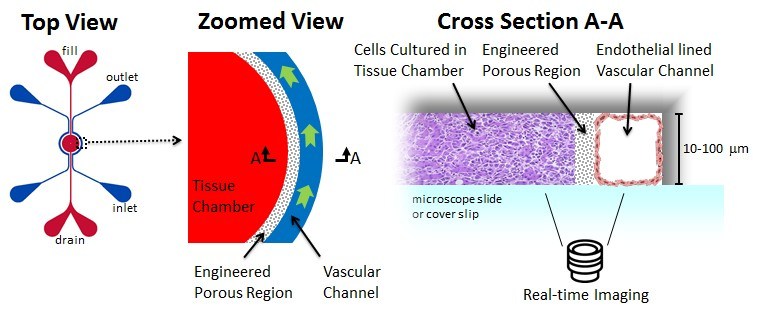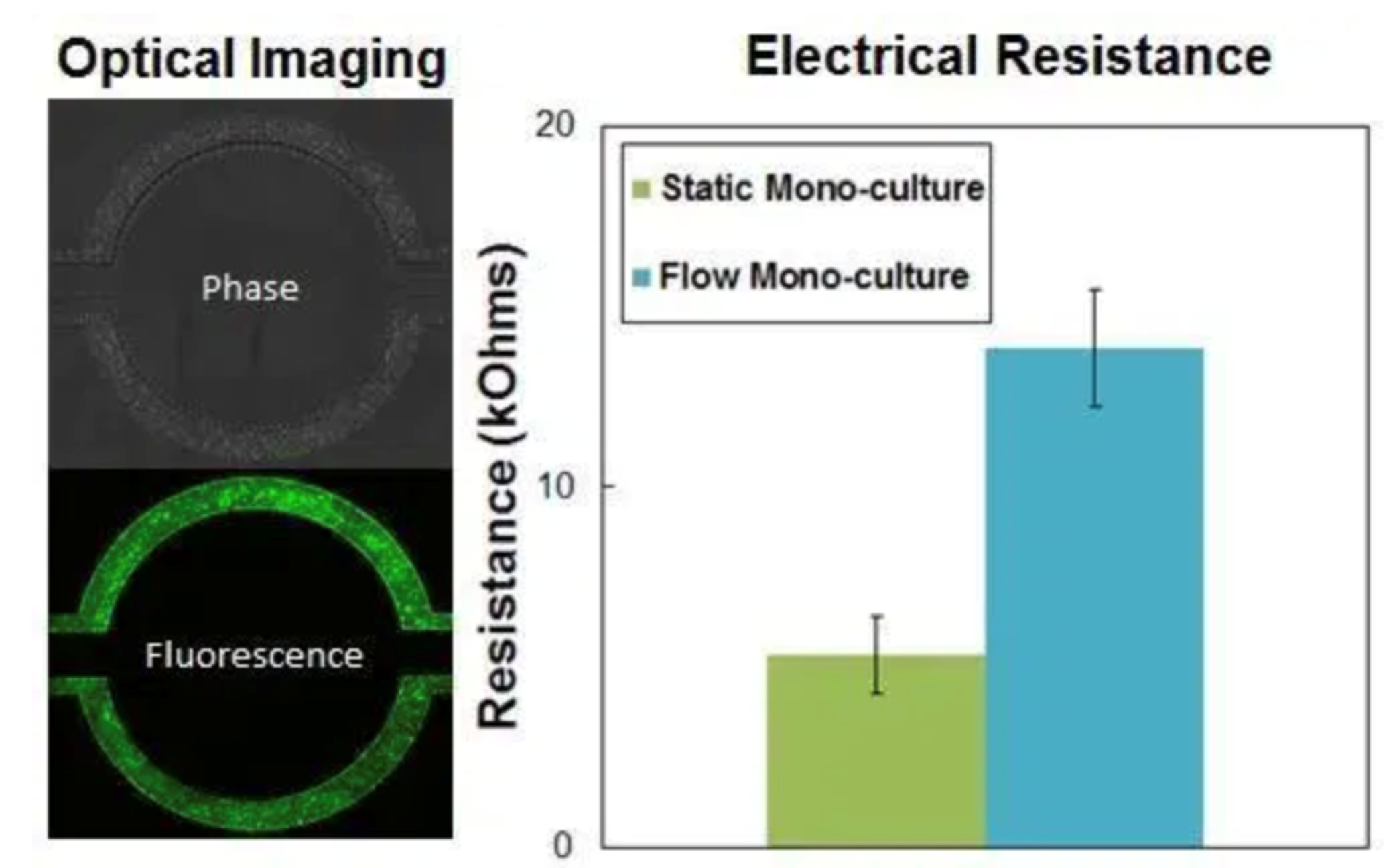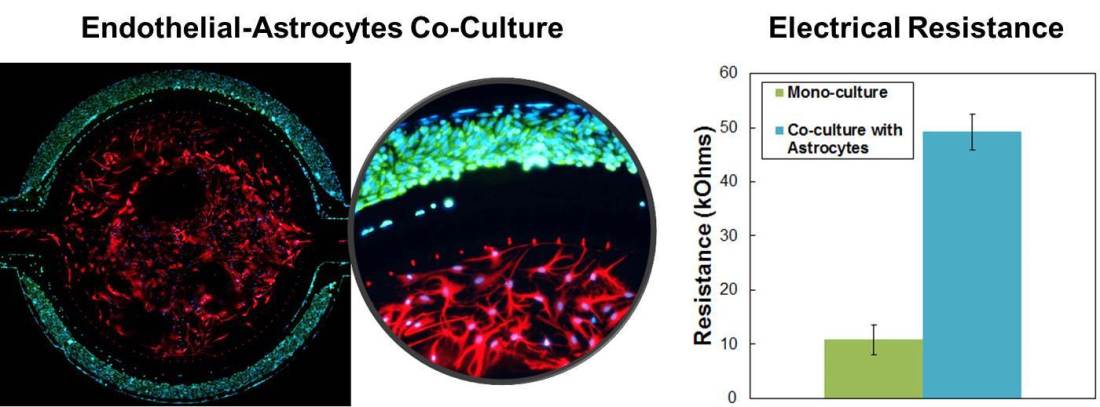Traditional blood brain barrier (BBB) assays, such as the Transwell® model have significant limitations such as lack of physiological shear stress, real-time visualization capability and large amount of consumables in addition to cumbersome protocols.
Realistic and Dynamic In Vitro Model of the Blood Brain Barrier
SynVivo-BBB system recreates the in vivo micro-environment by emulating a histological slice of brain tissue cells in communication with endothelial cells across the BBB. SynVivo-BBB is the only in vitro BBB model that allows
- Accurate in vivo hemodynamic shear stress
- Real-time visualization of cellular and barrier functionality
- Significant reduction in cost and time
- Robust and easy to use protocols
The SynVivo-BBB system is a highly versatile platform for investigation of:
- Tight junction proteins
- Transporter proteins
- Drug permeability
- Inflammation
- Cell migration
- Omic changes
- Neurotoxicity
- Neuro-oncology
Modes of Operation
Mono-Culture
Shear-induced endothelial cell tight junctions, which cannot be achieved in the Transwell® model, are easily achieved in the SynVivo model using fluid perfusion. Formation of tight changes can be measured using biochemical or electrical analysis (assessing changes in electrical resistance) with the SynVivo Cell Impedance Analyzer.
Primary endothelial cells are cultured in the vascular channel under physiological fluid flow. Cells are stained for tight junction markers highlighting the increase under fluid flow compared to static conditions. The Cell Impedance Analyzer system is used to measure increases in Ohmic resistance (TEER), associated with the formation of tight junctions.
Co-Culture with Tissue Cells
Interactions between brain tissue cells and endothelial cells are readily visualized in the SynVivo-BBB model. Transwell models do not allow real-time visualization of these cellular interactions, which are critical for the understanding of the physiological environment.
Endothelial cells are cultured underflow in the vascular channel, and the tissue chamber is cultured with primary brain cells, such as astrocytes. Increases in Ohmic resistance across the barrier, measured with the Cell Impedance Analyzer, are associated with tight junction formation across the BBB. Endothelial cells co-cultured with astrocytes form significantly tighter cell junctions compared to mono-cultured endothelial cells.
Data Examples
Real-Time Permeability Assays
Unlike BBB models which are arranged in top to bottom architecture (i.e., Transwell), small molecule transport can be assessed and quantified in real-time across the SynVivo-BBB system due to its side-by-side architecture.
A fluorescently-labeled drug molecule of interest is perfused through the vascular channels at physiological flow rate. Real-time videos are acquired and analyzed to calculate the rate of permeability into the tissue chamber. Different rates of permeability is observed across the BBB due to tight junctions of endothelial cells.
Real-Time Modulation Tight Junction Modulation
SynVivo-BBB can be used to model inflammation responses. A pro-inflammatory compound, such as TNF-α, is added to mono-cultured endothelial cells to modulate the tight junctions, followed by a period of recovery under perfusion flow. Electrical resistance measurements provide a non-invasive method for real-time monitoring of tight junctions.





